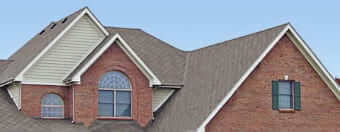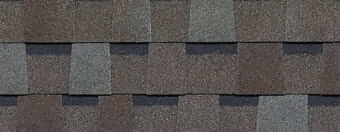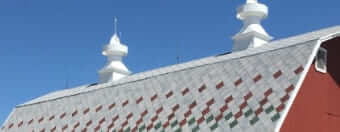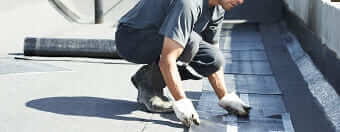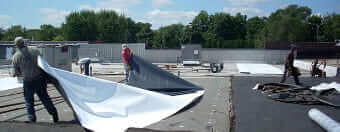from Sherriff Goslin Roofing
Choose your view:
How Roof Flashing Works to Stop Leaks Before They Start
Your roof works hard every day to keep the weather out and your home safe. But while shingles get most of the credit, they’re not the only part doing the heavy lifting. Roof flashing plays a huge role in leak prevention by protecting the spots shingles can’t fully cover. Think of it as the unsung hero that keeps water from finding its way inside.
In this guide, we’ll break down what flashing does, the materials it’s made from, common signs of trouble, and when it’s time to schedule an inspection. By the end, you’ll know why flashing matters and how keeping it in good shape helps you avoid costly water damage.
What Roof Flashing Does & Why It Matters
When it rains, your roof is working overtime to keep water out. Shingles do a lot of the heavy lifting, but they can’t handle every tricky spot on their own. That’s where roof flashing steps in.
Flashing is the thin material that seals up the areas that shingles can’t fully protect. It directs water away from seams, edges, and joints so it flows safely into your gutters instead of sneaking into your home. In fact, the International Building Code requires flashing to be installed wherever water could enter a roof system.
Without proper flashing, even a small storm could send water straight into the weakest parts of your roof. Over time, that means leaks, stains, mold, and damage that’s far more expensive than simply keeping your flashing in good shape.
What is the Connection Between Flashing Failure & Water Damage?
When flashing wears out, even the tiniest gap can allow water to easily enter your home. What starts as a drip near a chimney or vent can quickly spread into ceilings, walls, or insulation. To make matters worse, the damage isn’t always obvious at first.
Thankfully, there are a few signs of roof leaks that can be noticeable:
- Brown stains or streaks on your ceiling or walls
- Warped wood or peeling paint near rooflines
- Musty smells or mold growth from trapped moisture
- Bigger structural issues if leaks are left alone too long
Why it matters: Taking care of your flashing now means fewer surprises later and helps keep your home safe, dry, and comfortable.
What Are the Key Roof Areas for Flashing?
According to the U.S. Department of Energy’s Building America program, flashing around penetrations like skylights and vents is critical to preventing leaks. It’s true that certain parts of your roof are more vulnerable to leaks than others, especially where different materials or angles come together.
Shingles alone can’t always keep those spots watertight, which is why flashing is so important. It adds a protective seal that directs water away from weak points and keeps it flowing toward your gutters instead of into your home.
Chimneys
Chimneys create a large opening in your roof, and without flashing, water can easily collect at the base. Properly sealed flashing prevents leaks where brick and shingles meet.
Roof Edges & Eaves
Edges and eaves take the brunt of heavy rain runoff. Flashing here helps guide water safely into gutters instead of letting it soak into the roof deck.
Skylights
Skylights add natural light but also introduce seams where water can sneak through. Flashing ensures these joints stay sealed and watertight.
Valleys
Where two slopes meet, valleys funnel large amounts of water. Flashing strengthens these high-flow areas so water drains away instead of seeping in.
Vent Pipes
Vent pipes penetrate the roof and create gaps around their bases. Flashing wraps these openings to stop leaks and protect surrounding shingles.
What Are Common Flashing Materials & Their Durability?
Not all flashing is created equal. The type installed on your roof makes a big difference in how long it lasts and how much care it needs. The National Roofing Contractors Association even provides guidelines showing how different flashing materials perform under long-term use.
Let’s walk through the most common options so you know what’s up there protecting your home.
Aluminum
Aluminum is often the “go-to” flashing for homes. It’s light, easy to shape, and fits into tricky roof corners without much fuss. Plus, aluminum can come in many different colors that can match your shingles, making it perfect for a variety of home designs.
Durability & Maintenance of Aluminum Flashing
Aluminum does a solid job in most climates, but doesn’t play well with masonry unless it has a special coating. Untreated aluminum can corrode faster if you’ve got brick chimneys or stonework. The good news? With a bit of care and regular inspections, aluminum flashing can hold strong for years without breaking the bank.
Galvanized Steel
When you want muscle, galvanized steel is the heavyweight. It’s tough, built for stormy weather, and gives you peace of mind if you’re worried about flying debris or heavy winds.
Durability & Maintenance of Galvanized Steel Flashing
The strength of galvanized steel comes from its protective zinc coating, but over time, that shield can wear down. Once it does, rust can creep in. A quick yearly check is usually all it takes to make sure it stays in top shape. With proper care, steel flashing can easily outlast plenty of other options.
Copper
Copper is the flashy one—literally. It looks great, lasts a lifetime, and even changes color gracefully, turning that rustic green patina everyone admires.
Durability & Maintenance of Copper Flashing
If budget isn’t a concern, copper flashing is hard to beat. It’s naturally resistant to corrosion and practically maintenance-free once installed. You’ll still want a pro to check it during regular roof inspections, but otherwise, copper is about as “set it and forget it” as it gets in roofing.
Rubber & Plastic
Think of rubber and plastic flashing as the flexible problem-solvers. They’re usually used around vent pipes or spots where metal might not fit well.
Durability & Maintenance of Rubber & Plastic Flashing
Here’s the catch: sunlight is rough on these materials. Over time, they can crack or dry out, which leaves openings for water. The best approach? Keep an eye on them during inspections and replace them when they start showing wear. It’s a simple swap that can save you from a surprise leak later.
What Are the Signs of Flashing Problems?
Flashing problems don’t always jump out right away, but your home often gives you little hints when something’s wrong. Spotting these early signs can save you from bigger headaches like leaks, mold, and costly repairs down the road.
Common signs of flashing problems include:
- Water Stains Indoors: Notice dark spots or streaks on your ceilings, walls, or around windows and doors? That could be water sneaking in where it shouldn’t.
- Visible Rust or Corrosion: If your metal flashing looks rusty, worn, or like it’s starting to peel away, it’s time for a closer look.
- Loose or Missing Flashing: Pieces that are pulling away from the roof, chimney, or siding are a red flag.
- Mold or Mildew Growth: A musty smell or damp spots in your attic, basement, or near exterior walls can point to hidden leaks.
- Shingle or Siding Damage: Curling shingles or siding that looks warped near rooflines may be a sign your flashing isn’t doing its job.
Why this matters: The sooner you spot flashing issues, the easier (and cheaper) they are to fix. A quick inspection now can prevent water damage, protect your home’s structure, and give you peace of mind when the next storm rolls through.
What Happens If Flashing Problems Are Ignored?
When flashing problems are left unchecked, small issues can quickly snowball into major headaches. That tiny leak you notice today can lead to water damage inside your walls, mold and mildew growth, and even structural problems as wood begins to rot.
Over time, the repair costs climb much higher than a simple flashing fix would have been. Taking care of flashing issues early saves money and keeps your home safe, dry, and worry-free.
When to Check Your Roof Flashing for Leaks or Damage
Flashing problems can develop slowly and are often hidden behind shingles, siding, or trim. Even a small gap or rusted edge around chimneys, valleys, or roof vents can let water seep in and spread unnoticed. Regular inspections are critical, especially after a storm when water may have shifted or lifted key flashing materials.
We recommend checking your roof flashing:
- After Severe Weather: High winds or hail can loosen flashing or lift surrounding shingles.
- At Least Once a Year: A yearly inspection helps catch issues before they escalate.
- If You See Stains or Streaks: Discoloration on ceilings or walls often traces back to failed flashing.
- When Selling or Buying a Home: A professional review provides peace of mind for both parties.
Why it matters: Keeping flashing in good shape is one of the simplest ways to protect your roof from long-term damage. When it’s time to act, professional insight from a local roofing company can inform you so that you know exactly where your roof stands.
Schedule a Roof Flashing Inspection to Prevent Future Leaks
Wondering if your roof flashing is doing its job? A professional inspection helps identify weak points before they lead to costly water damage.
Our team at Sherriff Goslin Roofing will check your flashing, explain where improvements are needed, and recommend long-term solutions that help protect your home from leaks. Every inspection comes with honest feedback, expert guidance, and options built around your roof’s unique condition.
Contact us today to schedule your roof flashing inspection and stay ahead of potential water damage.

